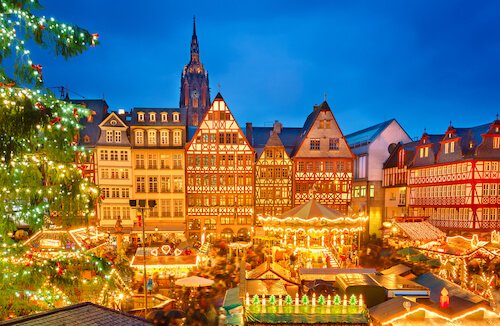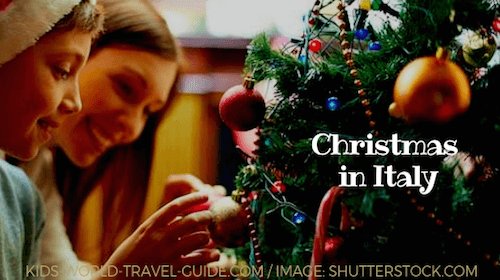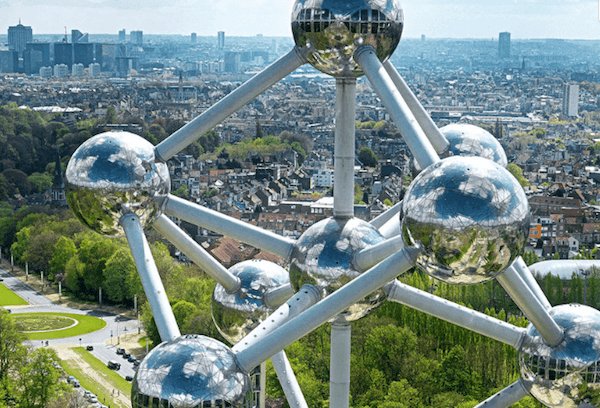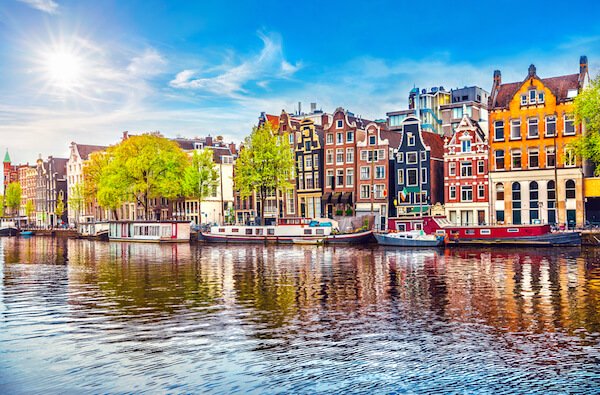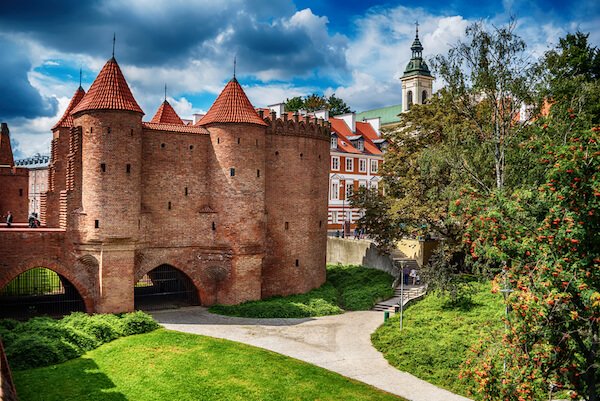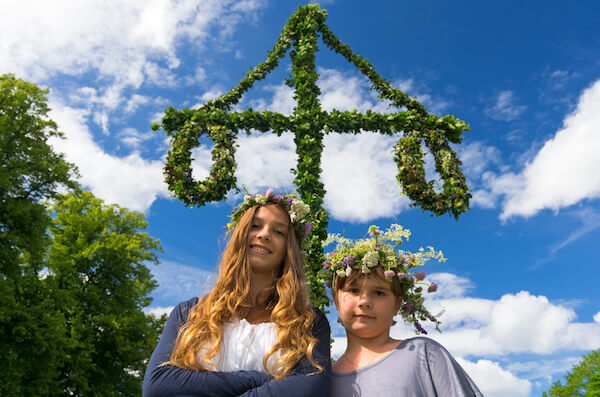Christmas in Germany
Christmas in Germany is celebrated with many traditions that are unique to Germany. Christmas celebrates the birth of the Christ child, Baby Jesus.
Christmas celebrations start in Germany on 24th December (Christmas Eve) when Christmas gifts are exchanged.
On 25th December (Christmas Day) and 26 December, usually the family gets together for celebrations and also the religious Christians will visit Christmas mass during these days. The German festive season starts at the end of November or early December with the Advent celebrations.
During the festive season, many cities and towns hold christmas markets which open usually from beginning of December until Christmas eve. Here see a photo of the traditional Christmas market in Frankfurt.
 Christmas market in Frankfurt
Christmas market in FrankfurtRead more about Christmas markets in Germany here.
Many town squares do have their own tall Christmas tree in front of the townhouse or city hall which are beautifully decorated with fairy lights and often the lights are switched on early in December with a big party.
There is always a majestic Christmas tree put up in front of Brandenburg Gate in Berlin which you can see in the image below.
 Christmas tree at Brandenburg Gate at night
Christmas tree at Brandenburg Gate at nightThere is a festive atmosphere during the whole month of December. Christmas markets and stalls sell traditional German delicatessen such as Christmas stollen, hot and sticky sweet roasted almonds, 'Lebkuchen' hearts (gingerbread hearts) and other Christmas sweets as well as typical Christmas decorations can be found in many towns. The most famous German christmas market is in Nuremberg. There are many stands with mouth-blown and delicately painted glass baubles in all sizes and colours.
 Glass baubles and Christmas decorations at Nuremberg Christmas Market
Glass baubles and Christmas decorations at Nuremberg Christmas MarketChristmas in Germany: Read here about the best German Christmas markets to visit.
Christmas in Germany
Typical Advent Traditions
The festive season is started with the Advent celebrations in preparation to the arrival of baby Jesus on Christmas day. Advent in Germany always starts on the fourth Sunday before Christmas Day, the 25th of December.
In 2023, the four Advent Sundays are celebrated on 3 December, 10 December, 17 December and 24 December as Christmas day falls on a Monday this year. In Germany, families decorate an Advent wreath with four red candles. On every Advent Sunday, one more candle is lit until all candles are alight to announce the imminent birth of Christ.
 Typical Advent wreath with four candles
Typical Advent wreath with four candlesAdventcalendars filled with sweets or chocolates are popular with children - now a tradition all over the world. The first door is opened on the 1st December until the last and often biggest door is opened on the 24th of December. In Germany, the calendar has 24 doors as Christmas celebrations already start on Christmas eve!
 The German Adventscalendar with 24 doors
The German Adventscalendar with 24 doorsOn the 6th of December, families celebrate Nikolaustag, Saint Nicholas Day. Often a 'real' Saint Nicholas, dressed in the red coat and hat and wearing a white beard -to disguise the father of family friend- and sometimes even his fearsome helper 'Knecht Ruprecht', who is dressed in black, come to the homes with young children. They come to ask the children if they have been good all year and also bring small gifts to the good children and to reprimand the naughty ones. Usually this is a merry and festive occasion celebrated with friends and family and Christmas carols are sung. Children are often asked to prepare and recite a poem for St Nicholas on that evening. Be prepared and find some popular - and easy to learn - English Christmas poems here.
 The 6 of December is Saint Nicholas day
The 6 of December is Saint Nicholas dayChildren also put their shoes, stockings or plates outside, so if Saint Nicholas does not come into the house, he still can leave some fruits, nuts and sweets for the children.
Many Germans display a traditional wooden Christmas pyramid in their living room. This pyramid is actually a little carousel with angels and a nativity scene, that stand on several levels and spin. The carousel spins with the help of lit candles that through the heat of their flames set the mechanism in motion. The tradition of using Christmas pyramids originated in the area of the German ore mountains ('Erzgebirge') in eastern Germany and dates back to the middle ages and is thus a much older tradition than the use of decorated Christmas trees.
 Traditional German Christmas Pyramid
Traditional German Christmas PyramidDuring the festive season and for Christmas in Germany, a nativity scene, a ‘Weihnachtskrippe’ is usually put up in many homes, as well as of course in churches and sometimes as part of the Christmas markets.
 Typical German nativity scene with carved wood figurines
Typical German nativity scene with carved wood figurinesDid you know that the nativity scene display with a crib filled with straw, originally stems from Italy and is now common in many countries around the world. See more on Christmas in Italy here.
Christmas in Germany
The Christmas tree in the living room is put up usually only on the morning of Christmas Eve. Germans also mainly use real, freshly cut fir or pine trees, that are sold in all sizes at most shops during the last days before Christmas. However, houses and gardens are decorated with festive lights throughout the festive season, just the tree comes last!
Christmas in Germany: On Christmas Eve, often only little food is eaten during the day as this is a fast day. The festive Christmas celebrations start already in the afternoon, when many families with children attend a festive children's mass at their local church. After mass, families celebrate at home, lighting the candles or lights on their Christmas tree for the first time.
 Real German Christmas tree
Real German Christmas treeAccording to tradition, the 'Christkind' (Christ child or Baby Jesus) will place the wrapped gifts and parcels under the Christmas tree whilst young children usually are not allowed to enter the living room before the celebrations in the evening. So the little ones are usually very excited when they finally are called to come into the living room where they then can admire the shiningly decorated Christmas tree lit and the gifts under the tree. Families usually read the Christmas story together and sing Christmas carols on that evening and later enjoy a meal and eating traditional 'Christmas Stollen', a traditional German Christmas cake with raisins. Families with older children often decorate the tree together during the day and after the Christmas celebrations, they visit midnight mass at their church.
 Typical German Christmas stollen
Typical German Christmas stollenOn the 6th of January, children and teenagers, dressed as the 'Three Wise Men', will go from house to house to sing carols, pray and 'bless' the houses and to collect money for a good cause. Usually this group of singers ('Sternsinger' in German meaning 'singers or followers of the star') is organised by the local Catholic church communities.
 Sternsinger
SternsingerCompetition 2024 is open!

Competition Winners 2023
Image Sources for Christmas in Germany: Shutterstock.com and thanks to Hans Kadereit/wikicommons
Popular Pages
Back to Christmas Around the World
Return from Christmas in Germany to Kids-World-Travel-Guide Homepage
***
Christmas around the World
***
***
More about Countries in Europe









